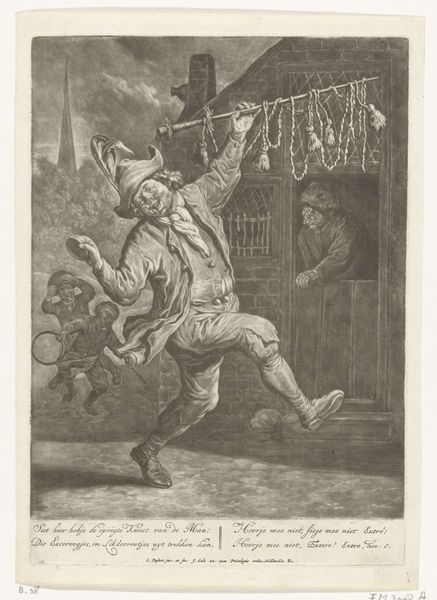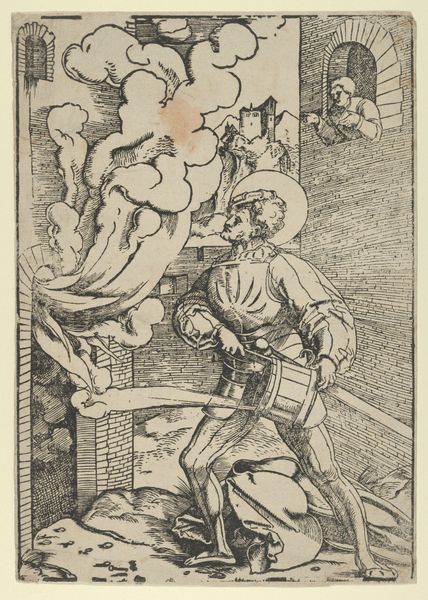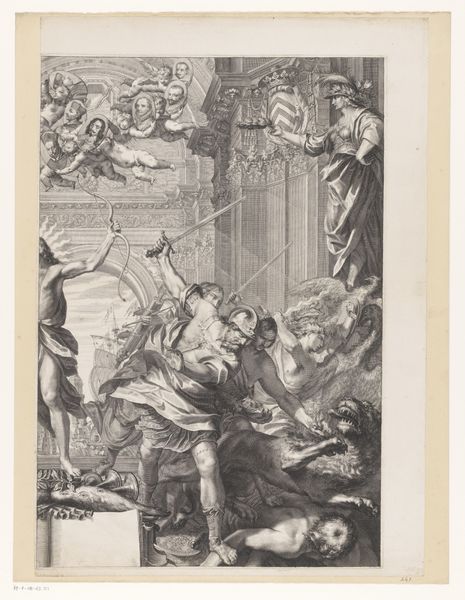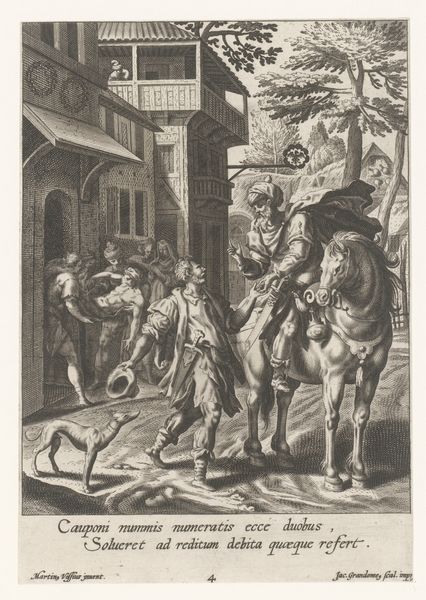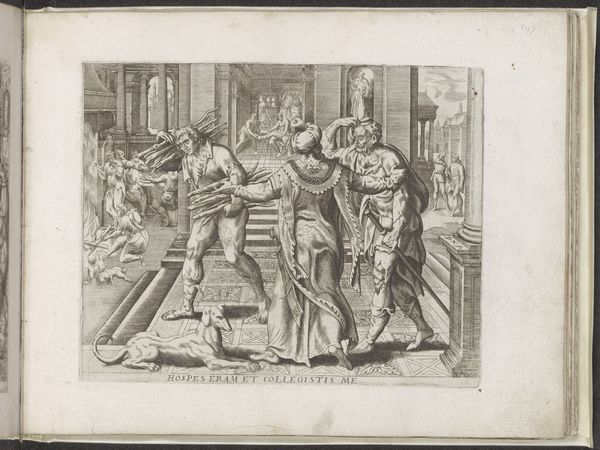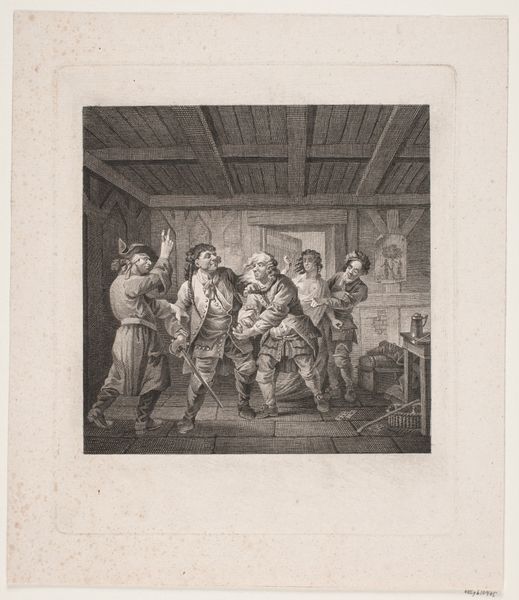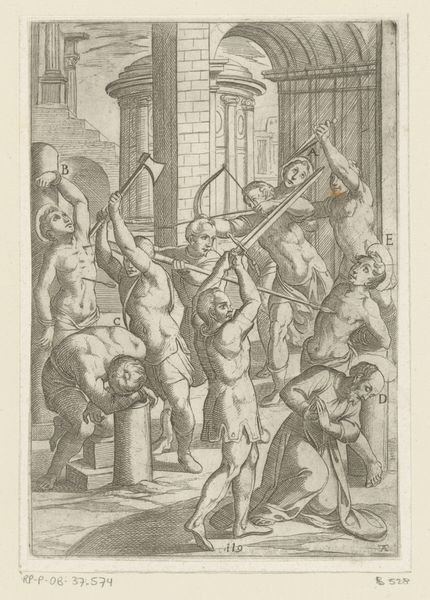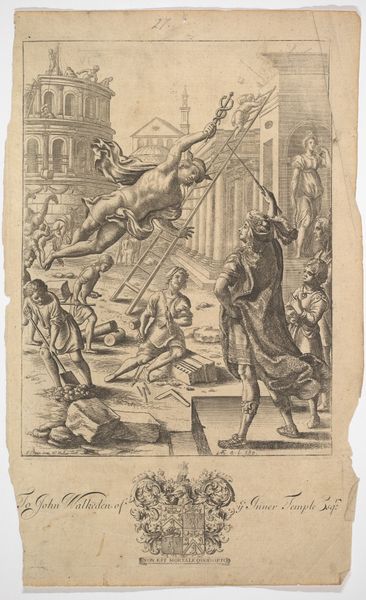
print, engraving
#
narrative-art
#
baroque
#
dutch-golden-age
# print
#
old engraving style
#
traditional media
#
genre-painting
#
engraving
Dimensions: height 312 mm, width 205 mm
Copyright: Rijks Museum: Open Domain
Editor: Here we have “The Prodigal Son Dancing and Drinking,” an engraving by Gerrit de Broen, made sometime between 1684 and 1740. There’s a revelry taking place, figures carousing, a large banner… It’s very detailed, almost chaotic. What stands out to you in terms of its historical or material context? Curator: What I notice first is the engraving itself. The lines, the labor-intensive process of etching and printing. How does this method of reproduction shape the *message* about prodigality? Consider who would have owned this print. Not necessarily the elite, but a rising merchant class. What does this relatively accessible image do in a society where wealth and poverty are becoming more defined? Editor: So, you’re saying that the print medium itself plays a role in understanding the artwork’s meaning? That's an interesting consideration! The materials matter! Curator: Exactly! The engraving becomes a form of social commentary available to a wider audience. Think about the cost of paper, the skill of the engraver, and how the image circulates. The scene of indulgence contrasts sharply with the material realities of producing and consuming art at that time. How might viewing this print challenge or reinforce contemporary social structures for those who purchased it? Editor: I hadn't considered that angle. Focusing on the actual production process sheds a completely different light. Does the print being affordable indicate it served as a warning? Curator: Or perhaps a vicarious thrill? Look at the lines of the figures and consider the process; each line laboriously cut and printed. Consumption and labor intertwine, prompting us to question where the prodigal son's "freedom" truly lies and for whom he represents potential pitfalls to social norms? What about that tipped bottle near his foot, seemingly discarded… what else is similarly “disposable”? Editor: Wow, I'm rethinking everything! Thanks for broadening my view. Curator: It's all about examining the tangible details to unpack bigger questions. Every artwork bears traces of its making, materials, and historical journey!
Comments
No comments
Be the first to comment and join the conversation on the ultimate creative platform.

